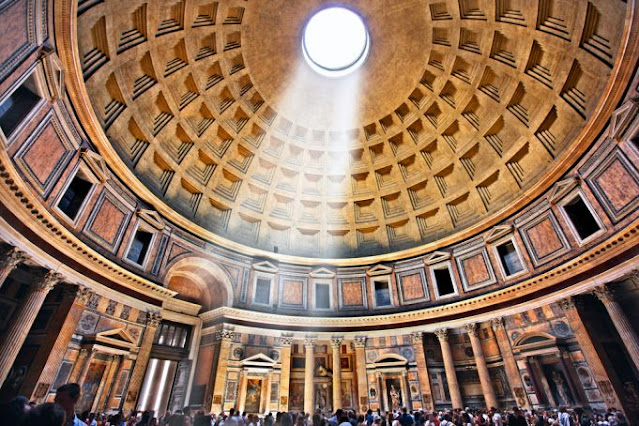The Pantheon, an architectural marvel of ancient Rome, stands as a testament to the ingenuity of its builders. One of the most intriguing aspects of the Pantheon is its oculus, a large circular opening in the center of the dome. Despite this hole, rain doesn't pour into the interior of the building. Let's delve into the fascinating engineering and design principles behind this phenomenon.
Ancient Engineering Mastery
Constructed between 118 and 128 AD during the reign of Emperor Hadrian, the Pantheon was originally built as a temple dedicated to all the gods of ancient Rome. Its dome, which spans an impressive 43 meters in diameter, was the largest of its kind until the 15th century. This architectural marvel was built primarily using concrete, a material that the Romans perfected, along with bricks and marble.
At the apex of the dome lies the oculus, a circular opening with a diameter of approximately 8.7 meters. Serving as the main source of light and ventilation for the interior, the oculus also holds symbolic significance, representing the connection between the temple and the heavens.
The Role of the Oculus in Rain Prevention
Dome's Sloped Design
Drainage System
Hydraulic Concrete
Natural Ventilation
Historical Accounts and Modern Observations
Throughout history, visitors to the Pantheon have marveled at its ability to remain dry despite rain falling through the oculus. Modern studies and observations continue to confirm the effectiveness of the Pantheon's design in preventing water ingress.
Conclusion
The Pantheon's enduring ability to repel rainwater through its oculus is a testament to the advanced engineering and architectural prowess of ancient Rome. Through meticulous design, innovative materials, and a deep understanding of physics, the builders of the Pantheon created a structure that continues to inspire awe and admiration centuries after its construction. As visitors gaze up at the open sky through the oculus, they are reminded not only of the heavens above but also of the remarkable achievements of human ingenuity on Earth.
Today's Blogger
Hello,
everyone! I'm Cristiano Pepe, a
student in the fifth year of Liceo Scientifico. I'm thrilled to be part of this
project because I have a deep love for reading, constantly seeking to broaden
my horizons and discover new things. I'm fascinated by other people's passions
and curiosities, which is why I'm eager to share in this space. Wishing you
enjoyable reading and looking forward to our next encounter in the blog!





Comments
Post a Comment